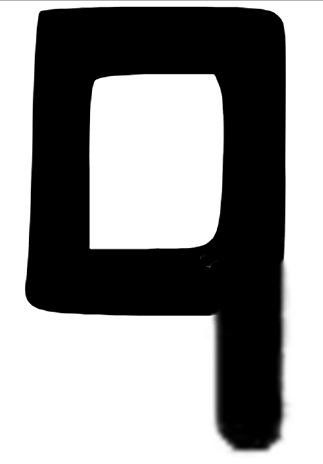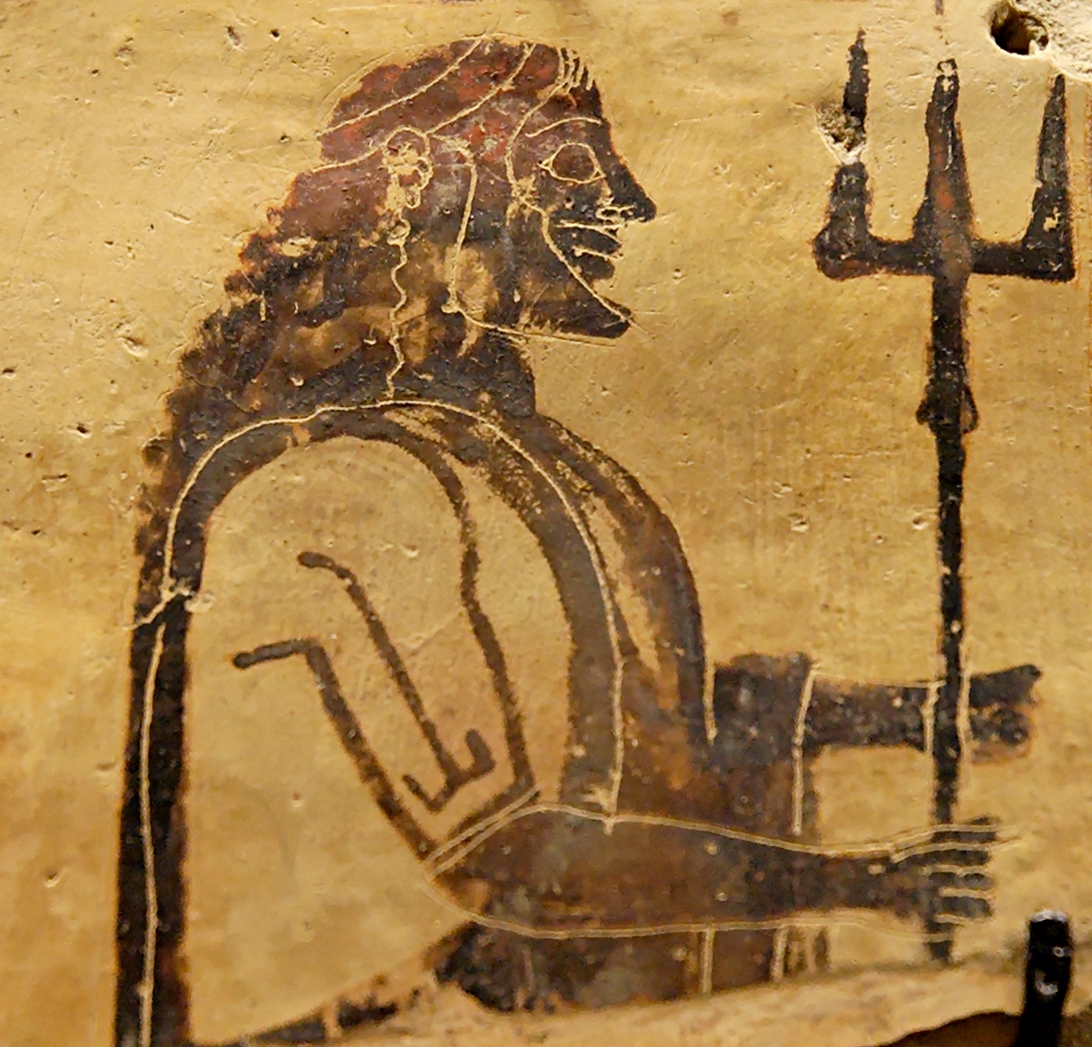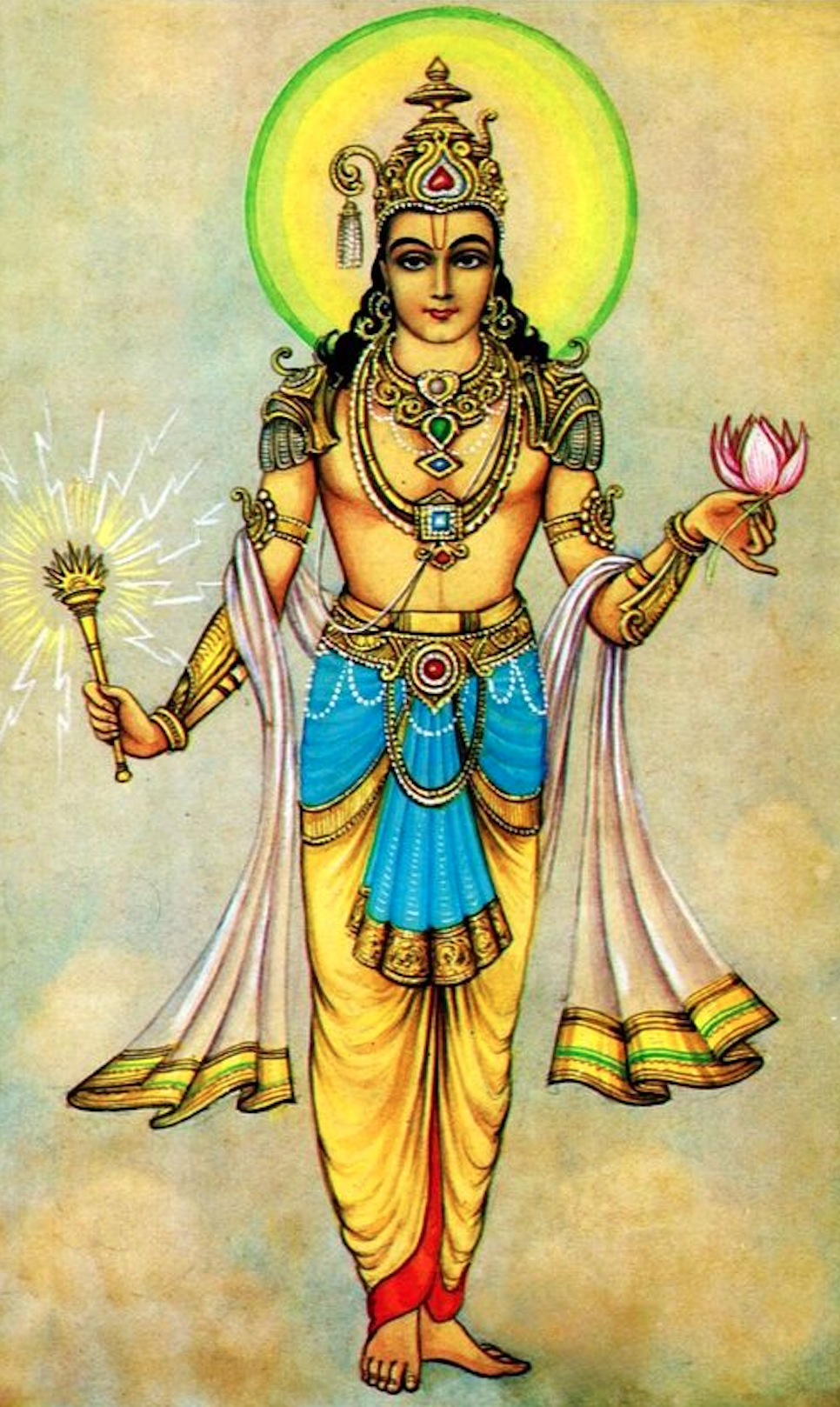|
Oesho
Oesho () is a deity found on coins of 2nd to 6th-century, particularly the 2nd-century Kushan era. He was apparently one of the titular deities of the Kushan dynasty. Oesho is an early Kushan deity that is regarded as an amalgamation of Shiva. By the time of the Kushan emperor Ooishki (Bactrian Οοηϸκι; often Romanised as Huvishka), who reigned in 140–180 CE, Oesho and the female deity Ardoksho (''Ardoxsho''; ''Ardochsho''; ''Ardokhsho'') were the only deities appearing on Kushan coins. Connections Connections to several contemporaneous deities worshipped by neighbouring cultures have been suggested. * During the Kushan era, Oesho was often linked to the Hindu concept of Ishvara, which was embodied by the god Shiva; Oesho may share the same etymology as Ishvara and/or represent a variant of the word in the Bactrian language spoken by the Kushans. * Similarities have retrospectively been identified with the Avestan Vayu. * Some later representations, evidently influenced ... [...More Info...] [...Related Items...] OR: [Wikipedia] [Google] [Baidu] |
Vasudeva I
Vāsudeva I (Bactrian language, Kushano Bactrian: Βαζοδηο ''Bazodeo''; Brahmi script, Middle Brahmi: 𑀯𑀸𑀲𑀼𑀤𑁂𑀯; ', Chinese language, Chinese: 波調 ''Bodiao''; flourished, fl. 200 Common Era, CE) was a Kushan Empire, Kushan emperor, last of the "Great Kushans." Named inscriptions dating from year 64 to 98 of Kanishka's era suggest his reign extended from at least 191 to 232 CE. He ruled in Northern India and Central Asia, where he minted coins in the city of Balkh (Bactria). He probably had to deal with the rise of the Sasanians and the first incursions of the Kushano-Sasanians in the northwest of his territory. The last named inscription of his predecessor, Huvishka, was in the year 60 of the Kanishka era (187 CE), and the Chinese evidence suggests he was still ruling as late as 229 CE. His name "Vāsudeva", is that of the popular Hindu God Vāsudeva, which refers to Krishna, and he was the first Kushan king to be named after the Indian God. He co ... [...More Info...] [...Related Items...] OR: [Wikipedia] [Google] [Baidu] |
Huvishka
Huvishka ( Kushan: Οοηϸκι, ''Ooēški'', Brahmi: 𑀳𑀼𑀯𑀺𑀱𑁆𑀓; ', '; Kharosthi: 𐨱𐨂𐨬𐨅𐨮𐨿𐨐 ', ') was the emperor of the Kushan Empire from the death of Kanishka (assumed on the best evidence available to be in 150 CE) until the succession of Vasudeva I about thirty years later. His rule was a period of consolidation for the Empire. Huvishka's territory encompassed Balkh in Bactria to Mathura in India, locations where it is known that he minted his coinage. Gold coins and amulets in his effigy were found as far as Pataliputra and Bodh Gaya, including one such amulet as an offering under the Enlightenment Throne of the Buddha in Bodh Gaya, suggesting with other finds of Kushan coins in the area that Kushan rule may have extended this far east. His reign seems to have been essentially peaceful, consolidating Kushan power in northern India, and moving the centre of the Kushan Empire to the southern capital city of Mathura. Religion Huvi ... [...More Info...] [...Related Items...] OR: [Wikipedia] [Google] [Baidu] |
Bactrian Language
Bactrian (, , meaning "Iranian") was an Eastern Iranian language formerly spoken in the Central Asian region of Bactria (present-day Afghanistan) and used as the official language of the Kushan and the Hephthalite empires. Name It was long thought that Avestan represented "Old Bactrian", but this notion had "rightly fallen into discredit by the end of the 19th century". Bactrian, which was written predominantly in an alphabet based on the Greek script, was known natively as (" Arya"; an endonym common amongst Indo-Iranian peoples). It has also been known by names such as Greco-Bactrian or Kushan or Kushano-Bactrian. Under Kushan rule, Bactria became known as ''Tukhara'' or ''Tokhara'', and later as '' Tokharistan''. When texts in two extinct and previously unknown Indo-European languages were discovered in the Tarim Basin of China, during the early 20th century, they were linked circumstantially to Tokharistan, and Bactrian was sometimes referred to as "Eteo-Tocharian" (i.e ... [...More Info...] [...Related Items...] OR: [Wikipedia] [Google] [Baidu] |
Kanishka II
Kanishka II (Brahmi: 𑀓𑀸𑀡𑀺𑀱𑁆𑀓; ') was one of the emperors of the Kushan Empire from around 232-247 CE. He succeeded Vasudeva I who is considered to be the last great Kushan emperor. Rule While he upheld Kushan rule in northern India, it is likely that Kanishka II lost the western part of his empire, namely Bactria/ Tokharistan to the Sasanian Shapur I (240-272 CE), whose conquests would be consolidated by the Kushano-Sassanians. In his inscriptions at Naqsh-e Rostam Shapur now claimed that he controlled the realm of the Kushans (Kūšān šahr) "up to Pašakibur (i.e. Purushapura)" (Peshawar), suggesting that he may have expanding even beyond the Hindu-Kush at the expense of the Kushans. The rock inscription at Rag-i-Bibi further support this view. Several overstrikes by the Kushano-Sasanian Peroz I Kushanshah over coins of Kanishka II are known, and it is from the time of Peroz that the first Kushano-Sasanian coins were issued south of the Hindu-Kus ... [...More Info...] [...Related Items...] OR: [Wikipedia] [Google] [Baidu] |
Trident Of Poseidon
The trident of Poseidon and his Roman equivalent, Neptune, has been their traditional divine attribute in many ancient depictions. Poseidon's trident was crafted by the Cyclopes. Myths In Greek mythology, Poseidon's trident was forged by the Cyclopes according to Pseudo-Apollodorus's '' Bibliotheke''. Poseidon wields his trident on a number of occasions. He used his trident to strike a rock upon the hill of the Acropolis, producing a well of seawater, in what developed into a contest between him and Athena over possession of Attica. When he lost, Poseidon used the trident to dry out the land so they had no water. The well was later to be called the Erechtheis. There is further myth that Poseidon (Neptune) produced a horse by striking the earth with the trident, in order to bolster his claim, but there is no attestation for this among Greek writers., 2:79 and note 2. The alleged trident print on a rock and the sea well within the Erechtheion were witnessed by the geographer ... [...More Info...] [...Related Items...] OR: [Wikipedia] [Google] [Baidu] |
Trident
A trident (), () is a three- pronged spear. It is used for spear fishing and historically as a polearm. As compared to an ordinary spear, the three tines increase the chance that a fish will be struck and decrease the chance that a fish will be able to dislodge itself if struck badly. On the other hand, they are not so many as to overly reduce the spear's concentration of force for piercing. The trident is the tool of Poseidon ( Greek) or Neptune ( Roman) used for the protection of the sea realms, the god of the sea in classical mythology. Other sea deities such as Amphitrite or Triton were also often depicted with a trident in classical art. Later, tridents were used in medieval heraldry, sometimes held by a merman or triton. In Hinduism, it is the weapon of Shiva and is known as a ''trishula'' (Sanskrit for "triple-spear"). It is also associated with the superhero Aquaman. The trident is an important military (especially naval) symbol as an element for forces such as ... [...More Info...] [...Related Items...] OR: [Wikipedia] [Google] [Baidu] |
Trishula
The ''trishula'' () is a trident, a divine symbol, commonly used as one of the principal symbols in Hinduism. It is most commonly associated with the deity Shiva and widely employed in his iconography. Etymology The name ''trishula'' ultimately derives from the Sanskrit word त्रिशूल (triśūla), from त्रि (trí), meaning "three", and शूल (śū́la), meaning "a sharp iron pin or stake", referring in this case to the weapon's three prongs. Symbolism The ''trishula'' has a number of interpretations in Hindu belief. The three points of the weapon have various meanings and significance have many stories behind them. They are commonly said to represent various trinities: creation, preservation, and destruction; past, present, and future; body, mind and atman; Dharma (law and order), bliss/mutual enjoyment and emanation/created bodies; compassion, joy and love; spiritual, psychic and relative; happiness, comfort and boredom; pride, repute and egotism ... [...More Info...] [...Related Items...] OR: [Wikipedia] [Google] [Baidu] |
Greco-Bactrian
The Greco-Bactrian Kingdom () was a Greek state of the Hellenistic period located in Central-South Asia. The kingdom was founded by the Seleucid satrap Diodotus I Soter in about 256 BC, and continued to dominate Central Asia until its fall around 120 BC. At its peak the kingdom consisted of present-day Afghanistan, Tajikistan, Uzbekistan and Turkmenistan, and for a short time, small parts of Kazakhstan, Pakistan and Iran. An extension further east, with military campaigns and settlements, may have reached the borders of the Qin State in China by about 230 BC. Although a Greek population was already present in Bactria by the 5th century BC, Alexander the Great conquered the region by 327 BC and founded many cities, most of them named Alexandria, and further settled with Macedonians and other Greeks. After the death of Alexander, control of Bactria passed on to his general Seleucus I Nicator. The fertility and the prosperity of the land by the early 3rd century BC led to the ... [...More Info...] [...Related Items...] OR: [Wikipedia] [Google] [Baidu] |
Ishvara
''Ishvara'' () is a concept in Hinduism, with a wide range of meanings that depend on the era and the school of Hinduism. Monier Monier Williams, Sanskrit-English dictionarySearch for Izvara, University of Cologne, Germany In ancient texts of Hindu philosophy, depending on the context, ''Ishvara'' can mean lord, ruler, king, husband, queen, soul or the supreme Self ( Atman). In medieval era Hindu texts, depending on the school of Hinduism, ''Ishvara'' means God, Supreme Being, personal God, or special Self. In Shaivism, ''Ishvara'' is an epithet of Shiva.James Lochtefeld, "Ishvara", The Illustrated Encyclopedia of Hinduism, Vol. 1: A–M, Rosen Publishing. , page 306 In Vaishnavism it is synonymous with Vishnu, like in his epithet of Venkateswara. In traditional Bhakti movements, ''Ishvara'' is one or more deities of an individual's preference ( Iṣṭa-devatā) from Hinduism's polytheistic canon of deities. In modern-day sectarian movements such as Arya Samaj and Brahmoism, ... [...More Info...] [...Related Items...] OR: [Wikipedia] [Google] [Baidu] |
Vajra
The Vajra (, , ), is a legendary and ritualistic tool, symbolizing the properties of a diamond (indestructibility) and a thunderbolt (irresistible force). It is also described as a "ritual weapon". The use of the bell and vajra together as symbolic and ritual tools is found in all schools of Tibetan Buddhism. The vajra is a round, symmetrical metal scepter with two ribbed spherical heads. The ribs may meet in a ball-shaped top, or they may be separate and end in sharp points. The vajra is considered inseparable from the bell, and both are sold in dharma stores only in matching sets. The bell is also metal with a ribbed spherical head. The bell also depicts the face of Dhatvisvari, a female buddha and the consort of Akshobhya. The vajra has also been associated as the weapon of Indra, the Vedic king of the Deva (Hinduism), devas and Svarga, heaven. It is used symbolically by the dharma, dharmic traditions of Hinduism, Buddhism, and Jainism, often to represent firmness of spir ... [...More Info...] [...Related Items...] OR: [Wikipedia] [Google] [Baidu] |
Ardoksho
Ardoksho (Bactrian script Αρδοχϸο), also Romanised as Ardochsho, Ardokhsho and Ardoxsho, the Iranic goddess of wealth was a female deity of the Kushan Empire, in Central and South Asia during the early part of the 1st millennium CE. She is considered as an east Iranian goddess and alternate name of Lakshmi. She is known in the Avesta as Ashi. She has often been regarded as analogous to the deity Hariti, found in some varieties of Buddhism. Analogies have also been drawn with the Persian goddess Anahita, the Greek Tyche, the Roman Fortuna and the Hindu Shri. During the middle of the Kushan era, Ardoksho was usually the only deity other than a male counterpart, Oesho, depicted on Kushan coins. File:Kushan king Huvishka coin.jpg, Coin of Huvishka (150–180 CE), with standing Ardoksho and her name in Greek script. File:Vasishka. Circa 222-240 CE with goddess Ardoksho enthroned.jpg, Coin of Vasishka (222-240 CE) with goddess Ardoksho enthroned, and her name in Greek scrip ... [...More Info...] [...Related Items...] OR: [Wikipedia] [Google] [Baidu] |
Kushan Empire
The Kushan Empire (– CE) was a Syncretism, syncretic empire formed by the Yuezhi in the Bactrian territories in the early 1st century. It spread to encompass much of what is now Afghanistan, Eastern Iran, India, Pakistan, Tajikistan and Uzbekistan. Kushan territory in India went at least as far as Saketa and Sarnath, now near Varanasi district, Varanasi in Uttar Pradesh, where inscriptions have been found dating to the era of the Kushan emperor Kanishka the Great. The Kushans were most probably one of five branches of the Yuezhi confederation, an Proto-Indo-Europeans, Indo-European nomadic people of possible Tocharians, Tocharian origin, who migrated from northwestern China (Xinjiang and Gansu) and settled in ancient Bactria. The founder of the dynasty, Kujula Kadphises, followed Iranian and Greek cultural ideas and iconography after the Greco-Bactrian tradition and was a follower of the Shaivism, Shaivite sect of Hinduism. Two later Kushan kings, Vima Kadphises and Vasudeva ... [...More Info...] [...Related Items...] OR: [Wikipedia] [Google] [Baidu] |









